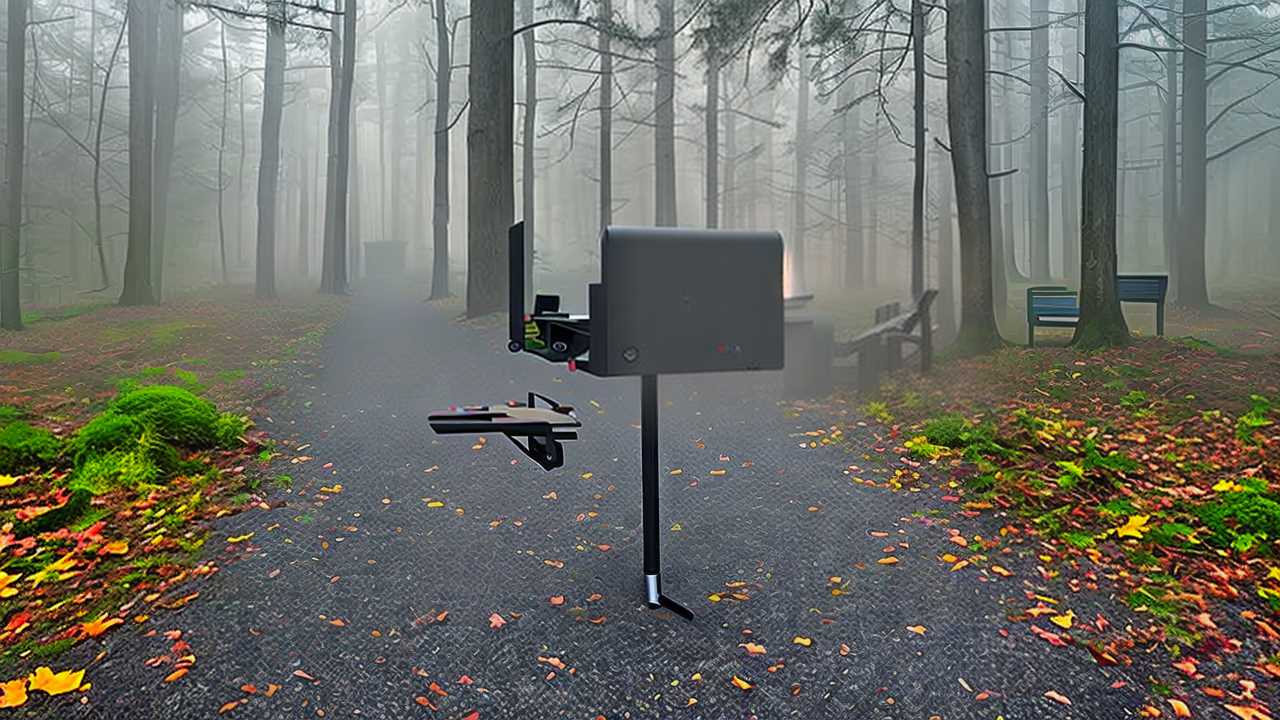When you use whitespace strategically in your website design, you create a clear visual hierarchy, guiding users' attention to the most important information and increasing the likelihood of them taking the desired action. By balancing visual elements and using whitespace effectively, you'll create a sense of harmony, stability, and cohesion, making it easier for users to focus on what matters. Whitespace also improves readability and legibility, allowing users to quickly absorb information. By leveraging whitespace, you'll enhance user experience, reduce cognitive load, and create a more relaxed, focused atmosphere. Now, explore how to harness the full potential of whitespace in your design.
 When you arrange elements on a page, you're creating a visual hierarchy, guiding the viewer's attention through a deliberate sequence of focal points. This hierarchy is crucial in communicating your message effectively, as it directs the viewer's eye through the content in a logical order. By doing so, you're controlling the flow of information and emphasizing the most important elements.
In a well-designed visual hierarchy, the most prominent elements grab the viewer's attention first, followed by secondary and tertiary elements. This creates a clear order of importance, making it easier for the viewer to digest the information. You can achieve this by using size, color, and whitespace strategically. For instance, a large headline will naturally draw attention, while a subtle background image will recede into the background. By balancing these elements, you can create a clear visual flow that guides the viewer through your content.
When you arrange elements on a page, you're creating a visual hierarchy, guiding the viewer's attention through a deliberate sequence of focal points. This hierarchy is crucial in communicating your message effectively, as it directs the viewer's eye through the content in a logical order. By doing so, you're controlling the flow of information and emphasizing the most important elements.
In a well-designed visual hierarchy, the most prominent elements grab the viewer's attention first, followed by secondary and tertiary elements. This creates a clear order of importance, making it easier for the viewer to digest the information. You can achieve this by using size, color, and whitespace strategically. For instance, a large headline will naturally draw attention, while a subtle background image will recede into the background. By balancing these elements, you can create a clear visual flow that guides the viewer through your content.
 As you design, you'll want to guide your users' attention effectively, and that starts with creating a clear visual hierarchy. By balancing and harmonizing the elements on your page, you'll be able to direct users' focus to the most important information.
As you design, you'll want to guide your users' attention effectively, and that starts with creating a clear visual hierarchy. By balancing and harmonizing the elements on your page, you'll be able to direct users' focus to the most important information.
 As you design, you'll find that carefully balancing whitespace improves readability and legibility. Now, it's time to focus on the details that make a real difference, such as making the most of line spacing, mixing font sizes, and creating clear paragraph flows.
As you design, you'll find that carefully balancing whitespace improves readability and legibility. Now, it's time to focus on the details that make a real difference, such as making the most of line spacing, mixing font sizes, and creating clear paragraph flows.
 By deliberately manipulating whitespace, designers can create a sense of balance and harmony in their compositions, guiding the viewer's eye through the layout with ease. You can achieve this harmony by distributing whitespace evenly, creating a sense of symmetry that's pleasing to the eye. Too much whitespace on one side of the layout can make it feel unbalanced, while too little can make it feel cramped. Finding the sweet spot is key.
When you balance whitespace effectively, you create a sense of visual flow, drawing the viewer's attention to the most important elements on the page. This balance also helps to create a clear hierarchy of information, making it easier for users to navigate your website. Remember, whitespace isn't just empty space – it's an active design element that can make or break the user experience.
By deliberately manipulating whitespace, designers can create a sense of balance and harmony in their compositions, guiding the viewer's eye through the layout with ease. You can achieve this harmony by distributing whitespace evenly, creating a sense of symmetry that's pleasing to the eye. Too much whitespace on one side of the layout can make it feel unbalanced, while too little can make it feel cramped. Finding the sweet spot is key.
When you balance whitespace effectively, you create a sense of visual flow, drawing the viewer's attention to the most important elements on the page. This balance also helps to create a clear hierarchy of information, making it easier for users to navigate your website. Remember, whitespace isn't just empty space – it's an active design element that can make or break the user experience.
 Effective use of whitespace enables your website to breathe, giving users a sense of freedom and flexibility as they navigate through the content. This sense of openness creates a more relaxed and focused user experience, allowing visitors to absorb information more efficiently. When you balance your content with whitespace, you're creating an uncluttered environment that guides the user's eye through the page.
This, in turn, reduces cognitive load and increases the chances of users engaging with your content. With adequate whitespace, you're giving your users' brains a break, allowing them to process information without feeling overwhelmed. As a result, they're more likely to stay on your site, explore your content, and ultimately, take the desired action.
Effective use of whitespace enables your website to breathe, giving users a sense of freedom and flexibility as they navigate through the content. This sense of openness creates a more relaxed and focused user experience, allowing visitors to absorb information more efficiently. When you balance your content with whitespace, you're creating an uncluttered environment that guides the user's eye through the page.
This, in turn, reduces cognitive load and increases the chances of users engaging with your content. With adequate whitespace, you're giving your users' brains a break, allowing them to process information without feeling overwhelmed. As a result, they're more likely to stay on your site, explore your content, and ultimately, take the desired action.
 As you strategically place whitespace throughout your website, it's equally important to break up content into manageable chunks that guide the user's attention. This intentional chunking helps users focus on specific information, making it easier to consume and understand. By doing so, you're creating a clear visual hierarchy, allowing visitors to quickly scan and identify key points.
When breaking up content, consider using headings, subheadings, and short paragraphs to create a clear structure. This will help users quickly grasp the main ideas and navigate through your content. Additionally, use bullet points, numbered lists, and short sentences to make complex information more digestible.
As you strategically place whitespace throughout your website, it's equally important to break up content into manageable chunks that guide the user's attention. This intentional chunking helps users focus on specific information, making it easier to consume and understand. By doing so, you're creating a clear visual hierarchy, allowing visitors to quickly scan and identify key points.
When breaking up content, consider using headings, subheadings, and short paragraphs to create a clear structure. This will help users quickly grasp the main ideas and navigate through your content. Additionally, use bullet points, numbered lists, and short sentences to make complex information more digestible.
 Cluttered designs overwhelm you, making it difficult to focus on the essential information and leading to a higher bounce rate. When you're bombarded with too much information, your eyes don't know where to land, and your brain gets tired. That's why avoiding clutter and distractions is crucial in web design.
You want to create a clean and simple layout that guides the user's attention to the most important elements. Whitespace plays a vital role in achieving this. By strategically using empty space, you can create a visual hierarchy, separating different sections and emphasizing key content. This, in turn, helps the user navigate your website more efficiently.
Cluttered designs overwhelm you, making it difficult to focus on the essential information and leading to a higher bounce rate. When you're bombarded with too much information, your eyes don't know where to land, and your brain gets tired. That's why avoiding clutter and distractions is crucial in web design.
You want to create a clean and simple layout that guides the user's attention to the most important elements. Whitespace plays a vital role in achieving this. By strategically using empty space, you can create a visual hierarchy, separating different sections and emphasizing key content. This, in turn, helps the user navigate your website more efficiently.
Key Takeaways
• Effective use of whitespace enhances readability and legibility by creating a clear hierarchy of information and guiding the reader's attention. • Deliberate manipulation of whitespace creates a sense of balance and harmony, distributing visual weight evenly and making it easier to focus on important elements. • Whitespace reduces cognitive load, giving users' brains a break and increasing the chances of engagement with the content, leading to a more relaxed and focused user experience. • Strategically placing whitespace breaks up content into manageable chunks, making it easier for users to consume and understand complex information. • Proper use of whitespace creates a sense of openness, guiding the user's eye through the content and increasing the chances of users staying on the site and taking the desired action.The Power of Visual Hierarchy
 When you arrange elements on a page, you're creating a visual hierarchy, guiding the viewer's attention through a deliberate sequence of focal points. This hierarchy is crucial in communicating your message effectively, as it directs the viewer's eye through the content in a logical order. By doing so, you're controlling the flow of information and emphasizing the most important elements.
In a well-designed visual hierarchy, the most prominent elements grab the viewer's attention first, followed by secondary and tertiary elements. This creates a clear order of importance, making it easier for the viewer to digest the information. You can achieve this by using size, color, and whitespace strategically. For instance, a large headline will naturally draw attention, while a subtle background image will recede into the background. By balancing these elements, you can create a clear visual flow that guides the viewer through your content.
When you arrange elements on a page, you're creating a visual hierarchy, guiding the viewer's attention through a deliberate sequence of focal points. This hierarchy is crucial in communicating your message effectively, as it directs the viewer's eye through the content in a logical order. By doing so, you're controlling the flow of information and emphasizing the most important elements.
In a well-designed visual hierarchy, the most prominent elements grab the viewer's attention first, followed by secondary and tertiary elements. This creates a clear order of importance, making it easier for the viewer to digest the information. You can achieve this by using size, color, and whitespace strategically. For instance, a large headline will naturally draw attention, while a subtle background image will recede into the background. By balancing these elements, you can create a clear visual flow that guides the viewer through your content.
Guiding User Attention Effectively
 As you design, you'll want to guide your users' attention effectively, and that starts with creating a clear visual hierarchy. By balancing and harmonizing the elements on your page, you'll be able to direct users' focus to the most important information.
As you design, you'll want to guide your users' attention effectively, and that starts with creating a clear visual hierarchy. By balancing and harmonizing the elements on your page, you'll be able to direct users' focus to the most important information.
Visual Hierarchy Matters
By strategically organizing visual elements, you can create a clear visual hierarchy that guides the user's attention to the most important information. This visual hierarchy matters because it helps users quickly understand the structure and content of your website. When you prioritize certain elements, you're telling the user what's most important, making it easier for them to navigate and engage with your site. To create an effective visual hierarchy, you should use size, color, and placement to draw attention to key elements. For example, use larger font sizes and bold text to highlight headings and subheadings. Use contrasting colors to make important buttons and calls-to-action stand out. By placing critical information above the fold, you ensure users see it immediately. By doing so, you're guiding the user's attention to the essential information, making it more likely they'll take the desired action. A well-designed visual hierarchy simplifies the user experience, reducing confusion and increasing engagement. By prioritizing the most important elements, you're creating a clear and intuitive user experience.Balance and Harmony
Your website's balance and harmony are crucial in guiding users' attention effectively, as they create a sense of stability that keeps users engaged. By achieving balance, you're able to distribute visual weight evenly, making it easier for users to focus on the content that matters. Harmony, on the other hand, is about creating a sense of cohesion and unity, ensuring that all design elements work together seamlessly. When you strike a balance between different visual elements, you create a clear visual flow that guides users' attention effortlessly. This, in turn, enhances the overall user experience, making it more enjoyable and engaging. By balancing text, images, and whitespace, you're able to create a sense of rhythm that keeps users interested and invested in your content.Focal Points Created
You can create focal points that guide users' attention effectively by strategically placing and sizing visual elements, such as headings, images, and buttons, to direct their gaze through your website. By doing so, you'll create a clear visual hierarchy that helps users navigate your site with ease. This is especially crucial when it comes to calls-to-action (CTAs), as you want to ensure users notice and engage with them. To create effective focal points, consider the size, color, and placement of your visual elements. Larger elements tend to draw more attention, while bold colors can make them stand out. You can also use whitespace to create contrast and make your focal points pop. For instance, placing a large, brightly colored CTA button in a sea of whitespace will undoubtedly grab users' attention.Improving Readability and Legibility
 As you design, you'll find that carefully balancing whitespace improves readability and legibility. Now, it's time to focus on the details that make a real difference, such as making the most of line spacing, mixing font sizes, and creating clear paragraph flows.
As you design, you'll find that carefully balancing whitespace improves readability and legibility. Now, it's time to focus on the details that make a real difference, such as making the most of line spacing, mixing font sizes, and creating clear paragraph flows.
Line Spacing Matters
Properly adjusted line spacing can boost the readability of your text by up to 20%, making it easier to scan and absorb. When you set the perfect line spacing, you're giving your readers' eyes a break, allowing them to focus on the content rather than struggling to distinguish one line from the next. You might be wondering, what's the magic number? The general rule of thumb is to set your line spacing between 1.2 to 1.5 times the font size. This means if you're using a 16-point font, your line spacing should be around 19-24 points.Font Size Variety
A mix of font sizes can elevate the readability of your text by creating a clear hierarchy of information, guiding the reader's attention to the most important elements. By using varying font sizes, you can create visual interest and draw the reader's eye to key points, like headings and subheadings. This helps to break up large blocks of text and makes your content more scannable. When choosing font sizes, consider the purpose of each element on your page. Headings, for instance, should be larger and more prominent to grab attention. Subheadings can be slightly smaller, while body text should be clear and readable. You can also use font sizes to create a sense of hierarchy within your content. For example, using a larger font size for a key statistic or quote can make it stand out and add emphasis. By thoughtfully selecting font sizes, you can create a clear and engaging visual flow that enhances the overall readability of your website.Clear Paragraph Flow
You can significantly boost the readability of your content by breaking up large blocks of text into clear, concise paragraphs that flow smoothly into one another. This is crucial because large chunks of text can be overwhelming and deter readers from engaging with your content. By dividing your text into manageable paragraphs, you create a sense of rhythm and flow that guides the reader's eye through your content. When crafting paragraphs, aim for a length of 3-5 sentences. This allows you to convey a single idea or thought without overwhelming the reader. Use transitional phrases and sentences to connect your paragraphs, creating a seamless flow from one idea to the next. Additionally, use whitespace effectively by adding line breaks, indentations, and margins to create a sense of breathing room around your paragraphs. This visual hierarchy will help readers focus on the content and move effortlessly through your text.Creating Balance and Harmony
 By deliberately manipulating whitespace, designers can create a sense of balance and harmony in their compositions, guiding the viewer's eye through the layout with ease. You can achieve this harmony by distributing whitespace evenly, creating a sense of symmetry that's pleasing to the eye. Too much whitespace on one side of the layout can make it feel unbalanced, while too little can make it feel cramped. Finding the sweet spot is key.
When you balance whitespace effectively, you create a sense of visual flow, drawing the viewer's attention to the most important elements on the page. This balance also helps to create a clear hierarchy of information, making it easier for users to navigate your website. Remember, whitespace isn't just empty space – it's an active design element that can make or break the user experience.
By deliberately manipulating whitespace, designers can create a sense of balance and harmony in their compositions, guiding the viewer's eye through the layout with ease. You can achieve this harmony by distributing whitespace evenly, creating a sense of symmetry that's pleasing to the eye. Too much whitespace on one side of the layout can make it feel unbalanced, while too little can make it feel cramped. Finding the sweet spot is key.
When you balance whitespace effectively, you create a sense of visual flow, drawing the viewer's attention to the most important elements on the page. This balance also helps to create a clear hierarchy of information, making it easier for users to navigate your website. Remember, whitespace isn't just empty space – it's an active design element that can make or break the user experience.
Enhancing User Experience Through Space
 Effective use of whitespace enables your website to breathe, giving users a sense of freedom and flexibility as they navigate through the content. This sense of openness creates a more relaxed and focused user experience, allowing visitors to absorb information more efficiently. When you balance your content with whitespace, you're creating an uncluttered environment that guides the user's eye through the page.
This, in turn, reduces cognitive load and increases the chances of users engaging with your content. With adequate whitespace, you're giving your users' brains a break, allowing them to process information without feeling overwhelmed. As a result, they're more likely to stay on your site, explore your content, and ultimately, take the desired action.
Effective use of whitespace enables your website to breathe, giving users a sense of freedom and flexibility as they navigate through the content. This sense of openness creates a more relaxed and focused user experience, allowing visitors to absorb information more efficiently. When you balance your content with whitespace, you're creating an uncluttered environment that guides the user's eye through the page.
This, in turn, reduces cognitive load and increases the chances of users engaging with your content. With adequate whitespace, you're giving your users' brains a break, allowing them to process information without feeling overwhelmed. As a result, they're more likely to stay on your site, explore your content, and ultimately, take the desired action.
Breaking up Content With Intention
 As you strategically place whitespace throughout your website, it's equally important to break up content into manageable chunks that guide the user's attention. This intentional chunking helps users focus on specific information, making it easier to consume and understand. By doing so, you're creating a clear visual hierarchy, allowing visitors to quickly scan and identify key points.
When breaking up content, consider using headings, subheadings, and short paragraphs to create a clear structure. This will help users quickly grasp the main ideas and navigate through your content. Additionally, use bullet points, numbered lists, and short sentences to make complex information more digestible.
As you strategically place whitespace throughout your website, it's equally important to break up content into manageable chunks that guide the user's attention. This intentional chunking helps users focus on specific information, making it easier to consume and understand. By doing so, you're creating a clear visual hierarchy, allowing visitors to quickly scan and identify key points.
When breaking up content, consider using headings, subheadings, and short paragraphs to create a clear structure. This will help users quickly grasp the main ideas and navigate through your content. Additionally, use bullet points, numbered lists, and short sentences to make complex information more digestible.
Avoiding Clutter and Distractions
 Cluttered designs overwhelm you, making it difficult to focus on the essential information and leading to a higher bounce rate. When you're bombarded with too much information, your eyes don't know where to land, and your brain gets tired. That's why avoiding clutter and distractions is crucial in web design.
You want to create a clean and simple layout that guides the user's attention to the most important elements. Whitespace plays a vital role in achieving this. By strategically using empty space, you can create a visual hierarchy, separating different sections and emphasizing key content. This, in turn, helps the user navigate your website more efficiently.
Cluttered designs overwhelm you, making it difficult to focus on the essential information and leading to a higher bounce rate. When you're bombarded with too much information, your eyes don't know where to land, and your brain gets tired. That's why avoiding clutter and distractions is crucial in web design.
You want to create a clean and simple layout that guides the user's attention to the most important elements. Whitespace plays a vital role in achieving this. By strategically using empty space, you can create a visual hierarchy, separating different sections and emphasizing key content. This, in turn, helps the user navigate your website more efficiently.

